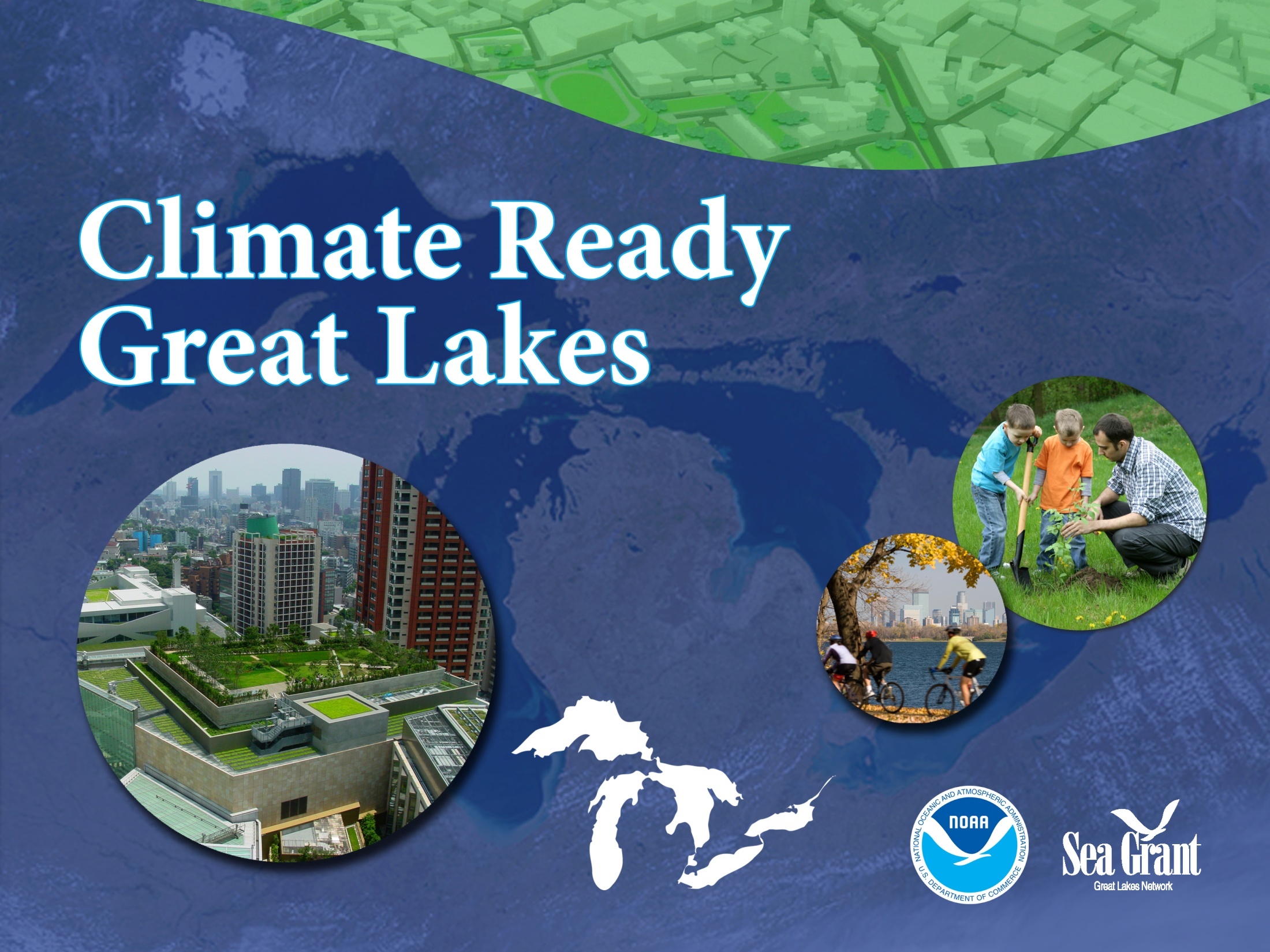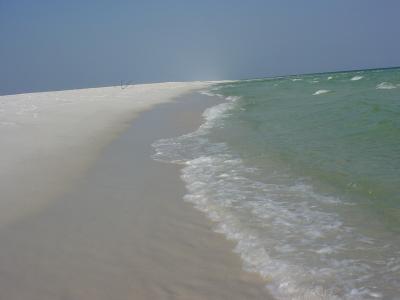The National Oceanic and Atmospheric Administration’s Great Lakes Climate Initiatives

Screenshot from the Climate Ready Great Lakes training series.
Posted by
Rachel GreggProject Summary
The National Oceanic and Atmospheric Administration (NOAA) is involved in multiple climate-related projects and initiatives in the Great Lakes region. Some highlights include: Climate Ready Great Lakes, a three module set of training presentations to help develop a region that is “climate ready”; a supplement to the report Adapting to Climate Change: A Planning Guide for State Coastal Managers specific to the Great Lakes region; and a series of climate preparedness workshops. Many of these projects have been funded through the Great Lakes Restoration Initiative.
Background
NOAA has developed region-specific teams in order to develop a flexible network to help coordinate national efforts with regional collaborators. There are eight geographical regions: Alaska, Central, Great Lakes, Gulf of Mexico, North Atlantic, Pacific Islands, Southeast and Caribbean, and Western. The regional teams engage partners and stakeholders and build and maintain relevant relationships within their dedicated region. They also monitor regional activities and help to facilitate collaboration between NOAA offices and their partners. The Great Lakes Regional Collaboration Team was established in 2004. The Team, along with other NOAA entities, has invested in capacity building around climate change in the Great Lakes, including training modules, a regional report, and workshops.
Implementation
The NOAA Great Lakes Regional Collaboration Team partnered with the Great Lakes Sea Grant Network to produce Climate Ready Great Lakes, a three module set of presentations to help practitioners and managers prepare for climate-related impacts. Each module contains a pre-designed presentation with a script, supplemental materials, worksheets, handouts, and evaluation forms. The modules were designed to act as standalone presentations or to be covered sequentially.
- Module 1, What am I adapting to?, covers observed and predicted climate change impacts on the Great Lakes. It also aims to provide users with examples of how communities are preparing for climate change.
- Module 2, Developing a Climate Adaptation Plan, outlines a planning process to help identify climate-related vulnerabilities and identifies specific adaptation strategies that may be incorporated into plans.
- Module 3, Climate Change Adaptation Tools, introduces resources and tools that have been developed to help local communities adapt to climate change.
In 2009, the U.S. government dedicated $475 million to help restore the Great Lakes region through the Great Lakes Restoration Initiative (GLRI), which is the largest investment in the restoration of the Great Lakes in two decades. Funding from the GLRI was used to develop a Great Lakes-specific supplement to the 2010 report, Adapting to Climate Change: A Planning Guide for State Coastal Managers. The supplemental report expands upon the initial nationwide report by providing regionally-specific climate trends in and potential climate change impacts on the region. The 76-page report has sections that focus on predicted impacts on and consequences for the Great Lakes region, adaptation planning strategies and efforts, and specific adaptation examples (Cruce and Yurkovich 2011).
In addition, NOAA’s National Estuarine Research Reserve (NERR) System, along with several partners, has hosted a series of climate planning workshops in the Great Lakes. The NERR piloted these trainings along with Washington Sea Grant in the Padilla Bay NERR in 2009 (Gregg 2010). Similar workshops were held in 2011 in Cleveland, Ohio, Green Bay, Wisconsin, and Duluth, Minnesota. These workshops were one-day events that addressed regional climate change issues and the needs of regional planners and other professionals to develop targeted adaptation actions to prepare for the anticipated impacts of climate change. The workshops were funded through the Great Lakes Restoration Initiative. Other sponsors included the Old Woman Creek NERR, Lake Superior NERR, Ohio Coastal Training Program, Ohio Department of Natural Resources, Ohio Sea Grant, Ohio Coastal Management Program, University of Wisconsin Extension, The Ohio State University, Ohio Lake Erie Commission, and the NOAA Coastal Services Center. Workshop materials and videos are available on the NERR Climate Change in the Great Lakes website.
Outcomes and Conclusions
NOAA has strongly invested in capacity building efforts in the Great Lakes region. NOAA is also a partner in a variety of regional projects and programs, including the National Wildlife Federation’s Climate-Smart Restoration Partnership.
Citation
Feifel, K. M., & Hitt, J. L. (2012). The National Oceanic and Atmospheric Administration’s Great Lakes Climate Initiatives [Case study on projects of the National Oceanic and Atmospheric Administration]. Product of EcoAdapt's State of Adaptation Program. Retrieved from CAKE: www.cakex.org/case-studies/national-oceanic-and-atmospheric-administrat… (Last updated October 2012)
Project Contact
Heather Stirratt
Great Lakes Regional Coordinator
[email protected]




